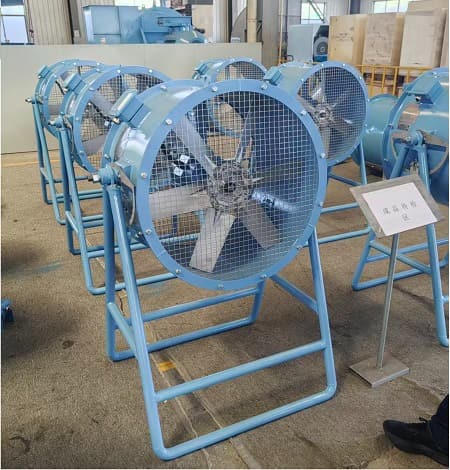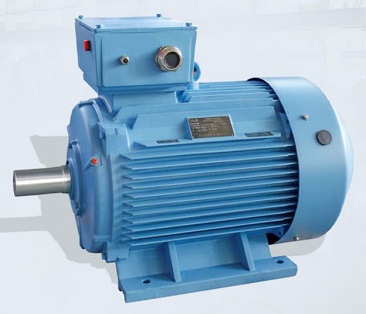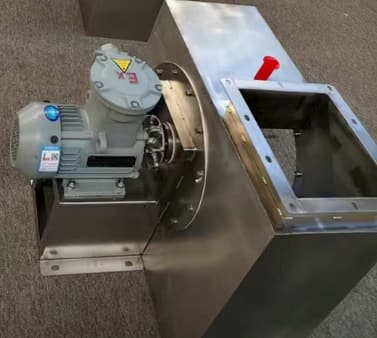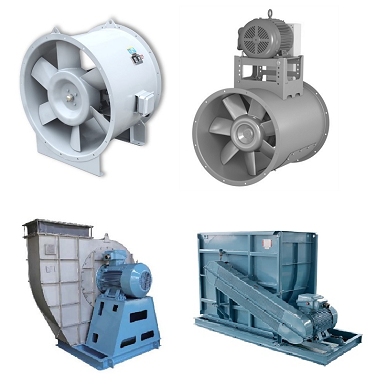AMCA Certification in the Fan Industry
AMCA Certification: The Benchmark for Fan Performance
The Air Movement and Control Association (AMCA), founded in 1955, is a leading authority in the ventilation and air movement sector. It sets industry-wide standards and operates the Certified Ratings Program (CRP) to ensure credibility in performance claims. AMCA’s role isn’t limited to testing—its standards guide global energy codes including ASHRAE 90.1, IECC, and even DOE regulations in the U.S.
Through AMCA’s CRP, products undergo rigorous testing for airflow, pressure, sound, and efficiency. Passing these tests allows manufacturers to display the AMCA Seal, lending credibility to their catalogs and product specifications. This certification remains a mark of quality and remains integral to procurement in commercial projects and infrastructure development.



FEG: The Traditional Efficiency Metric
Historically, the Fan Efficiency Grade (FEG)—defined in AMCA Standard 205—measured only the peak aerodynamic efficiency of the fan wheel, ignoring motor and drive system losses. Derived from the fan’s maximum total efficiency point, FEG provided a straightforward, comparable efficiency level.
Advantages of FEG:
-
Simple and easy to understand
-
Well established in legacy energy codes (e.g., older editions of ASHRAE 90.1 and IECC)
Limitations of FEG:
-
Ignores key energy losses in the motor, drive, and control systems
-
Depends heavily on selecting the fan near its peak efficiency point—a concept known as the “selection window,” which is often hard to meet in practice
-
Less reliable for real-world performance, especially in variable operating conditions
FEG remains valid in legacy projects and older code references but is being phased out in favor of more comprehensive metrics.
FEI: The Next-Generation Efficiency Standard
Enter the Fan Energy Index (FEI)—a more holistic, system-level metric developed by AMCA (Standard 208) and adopted in Standard 214. FEI compares the electrical input power of a fan system (including motor, drive, and controls) to that of a baseline reference under the same operating point.
Why FEI is Superior:
-
Captures wire-to-air performance, including all energy-consuming components
-
Removes complexity: designers don’t rely on peak-selection windows, making compliance easier
-
Reflects realistic operational performance and part-load efficiency
-
Supports variable-speed systems and future regulations
Key codes like ASHRAE 90.1‑2019, IECC 2021, and DOE fan regulations (effective Oct 2023) now mandate FEI values—typically FEI ≥ 1.00—to ensure energy performance compliance. In fact, several reputable manufacturers such as Greenheck and Twin City Fan now prominently feature FEI metrics in their performance data and fan selection tools.
Reference:
Focus Area | Current Status |
|---|---|
| AMCA Certification | Still essential for trust and compliance |
| FEG Metric | Remains used for legacy specs but limited in scope |
| FEI Metric | The modern requirement—especially for large, energy-conscious projects |
Conclusion
AMCA continues to be a vital benchmark for air movement products. While FEG served its purpose historically, FEI now defines the future of fan efficiency—promoting transparency, energy savings, and real-world performance. Ensuring FEI compliance is no longer optional—it’s a strategic necessity in modern ventilation system design.
SHUANGYANG FAN has been an AMCA International member since 2012, and continuously improving the level of manufacturing high-efficiency fans through AMCA certification.
Note: The content of the article cannot avoid omissions and errors. Welcome to propose corrections.
 Mancooler (Workstation) Fans — Why Your Factory Needs the Right One
Mancooler (Workstation) Fans — Why Your Factory Needs the Right One
 Motor Classifications in Industrial Fans
Motor Classifications in Industrial Fans
 Materials for Explosion-Proof Fan
Materials for Explosion-Proof Fan
 Direct Drive vs. Belt Drive in Axial Fan and Centrifugal Fan
Direct Drive vs. Belt Drive in Axial Fan and Centrifugal Fan

